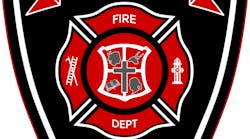Firehouse® Magazine is pleased to join with NIOSH in presenting this valuable information. It is important to note that while some incidents that will be described here occurred several years ago, the information presented is valuable today. The accounts that follow are summaries of NIOSH investigations. The complete reports are available on the program website.
TEXAS
Volunteer Firefighter Killed While Walking Across an Interstate Highway Responding to a Motor Vehicle Incident (Case F2003-13)
SUMMARY
On March 18, 2003, a 20-year-old male volunteer firefighter (the victim) was killed when he walked in front of a tractor-trailer truck on an interstate highway at about 3 A.M. The victim had responded to a minor motor vehicle incident located on the shoulder of the outer eastbound lanes. He drove his privately owned vehicle (POV) from his home, passed the fire station and traveled westbound on the highway. As he neared the incident scene from across the highway, he parked on the inside westbound shoulder and median directly behind a POV of the first firefighter on scene. He exited his vehicle, walked across the grass median and eastbound shoulder into the passing lane where he was struck by a tractor-trailer truck. He landed on the grass median and was pronounced dead at the scene.
CAUSE OF DEATH
According to the autopsy report, the cause of death was “severe craniocerebal injuries.”
RECOMMENDATIONS
- Fire departments should develop, implement and enforce standard operating procedures/guidelines (SOPs/SOGs) regarding emergency operations for roadway incidents, including procedures for parking on the same side of the roadway as the incident.
- Fire departments should ensure that personnel receive training in the proper procedures and the hazards associated with emergency operations for highway incidents.
- Fire departments should ensure that firefighters establish a protected work area on roadways before safely turning their attention to the emergency.
- Fire departments should establish pre-incident plans regarding traffic control for emergency service incidents and pre-incident agreements with law enforcement and other agencies such as highway departments.
- Fire departments should ensure firefighters wear suitable high-visibility apparel such as a yellow-green or orange reflecting flagger vests when operating at the emergency scene.
- Fire departments should consider limiting or restricting the response of their members in privately owned vehicles (POVs) to interstate highway incidents.






